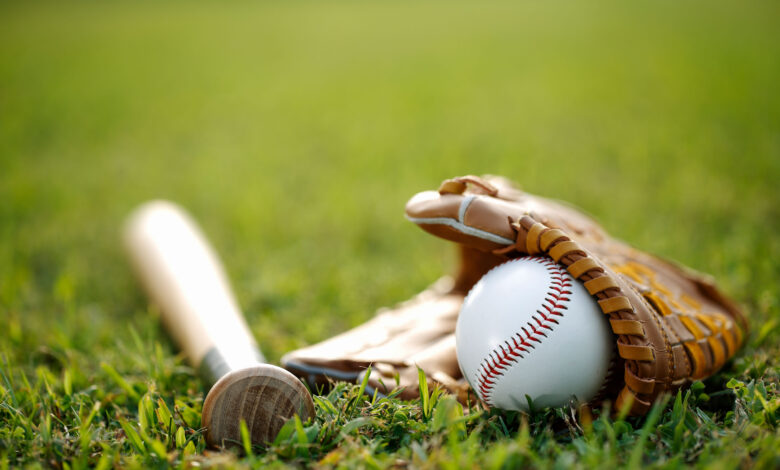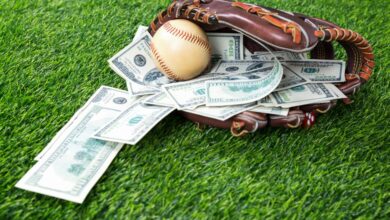
As is the case for almost any time-tested artifact of cultural significance, the history of baseball is mired in myth and half-truths — You’ve no doubt heard the tale of Abner Doubleday.
Sure, it’s a nice little story, clear-cut from start to finish, but the truth of the matter is that the history of baseball is more complex than the Doubleday myth suggests. The real history of America’s favorite pastime is uncertain and dogeared, semi-lost to the sands of time and the smallness of its beginnings.
However, much in the same way the first baseballs were cobbled together with scrap pieces of rubber and leather. With the help of TextFanDuel.com, we can piece together a somewhat cohesive actual history of baseball with various frayed facts and likelihoods.
The Bat & Ball Game

Historians have proven that the bat and ball game has existed in one form or another since the days of Ancient Egypt, but the rudiments of the sport we know and love today are actually European in origin.
There are references to a game known as baseball in Britain as far back as the 18th century, but it’s clear all that this and our game share is a name, as the mechanics of the British baseball are irreconcilably different.
Some posit that the English game of rounders – as the most similar to baseball – must be its foundation, but a more realistic notion is that both were heavily influenced by cricket or the even older English sport of stoolball.
The Sports Hits America
The influencing sports discussed above reached North America like anything did in those days… immigration. The games initially arrived in Canada, and shortly thereafter, crossed the International Boundary.
The first known reference to a prototypical baseball game here in The States was a 1791 Pittsfield, Massachusetts town bylaw, and in 1829, something reminiscent of the modern game was described in the English publication The Boy’s Own Book.
The following year, it was published in Boston, Massachusetts, inspiring a myriad of uncodified bat and ball games that loosely followed the principles set out by the book, including a diamond base formation.
The Sport Evolves In The Crucible Of American Culture

Some of these early American bat and ball games were referred to as base-ball, but this varied from place to place. Just as often, they were known as town ball or round-ball, and it wouldn’t be until 1838 that a detailed description of the commonalities between them emerged.
In many ways, they were already in line with the modern game of baseball, but there were also some key differences, including a fifth base, a shorter distance from the final bye to home, and a rule that stipulated a batter was out if the ball was caught after a single bounce.
These sports quickly gained popularity across the nation, becoming more and more alike as travelers shared game rules and philosophies with one another.
By the late 1830s, more concrete teams were cropping up. Perhaps the most significant was The Gotham Club from which the New York Knickerbockers were born following a disagreement regarding the size of the club.
The Codification Of Baseball
Alexander Cartwright was the lead proponent of The Gotham Club schism, and to ensure the new club he and his fellows were creating never befell the same fate, he and a committee created the Knickerbocker Rules in 1845.
These stipulations (20 in total) were primarily organizational in nature, chief among them being that a member must “have the reputation of a gentleman”, but there were also a lot of practical elements introduced.
Well… we say “introduced”, but sports historians are now fairly certain that many of these rules had already been codified in a less official manner by The Gotham Club.
The First Known Competitive Game Of Baseball

The first documented competitive game of baseball using the Knickerbocker Rules was played between the Knickerbockers and the New York Nine in 1846, with the Nine claiming the W, 23 to 1.
Even though the team weathered an embarrassing defeat, from this moment on, the Knickerbocker rules were adopted throughout the New York area.
The Advent Of Professional Baseball
Just over a decade after that first competitive game, sixteen teams based in and around New York founded the NABBP (National Association of Base Ball Players), the first governmental entity in the sport’s history.
The reason? To establish a competitive baseball championship.
Initially, all players were supposed to be amateurs, but by the 1869 season, it was painfully obvious that certain players were on the payroll of their teams. So, the rule was dropped, officially giving clubs the green light to declare professional status — The Cincinnati Red Stockings were the first to the punch.
Six years prior to this landmark change, another major revision was made, this time to the rules of the game… no longer could a batter be put out if a fielding player caught a fair ball after a first bounce.
The Scuffle For A Major League
Following an 1870 schism sparked by a conflict between amateur and pro ball players, the NABBP split in two, but as they say, a church divided cannot stand.
Weakened by the split, William Hubert’s National League claimed the headlining spot in American baseball in 1876, and shortly thereafter, a “gentleman’s agreement” barred non-white players from taking part in professional baseball.
This rule would stand until 1947, when African-American Jackie Robinson took to the diamond for the LA dodgers.
After the formation of the Western League made up of the Great Lake States, the National League would also struggle for prominence, and strict rules on team-switching left players dissatisfied.
Renamed the American League in 1894, the Western League would eventually become a second major league, equal in stature to the National League.
Gambling & Baseball

By this point, baseball had long been embraced by the gambling industry, but with the two major leagues established, it gave nefarious syndicates concrete targets at which to aim their corrupting ways.
Plus, punters were betting more than ever because of the moneyline nature of MLB odds as opposed to the point spread lines associated with football and basketball, meaning there was a lot of money changing hands.
It wasn’t long before the veracity of game results was being brought into question, culminating in the infamous Black Sox Scandal in 1919, which led to a concerted nationwide effort to curb gambling on baseball.
Thankfully, corruption was brought under control, and the latest baseball odds are now welcomed by fans of the sport who like to make games more interesting with a few choice wagers.
From Then To Now
By the 20th century, baseball had already been nicknamed “America’s favorite pastime”, yet, although the sport had attained national ubiquity, it wasn’t done evolving, steadily morphing into the electrifying game we enjoy today.
So infectious and fun is the game of baseball that over the last century it has again crossed oceans and borders, gaining popularity in a number of different countries, enriching cultures near and far, just as it did our own.
Final Thoughts
As America’s oldest professional sport, it’s tricky to put a timeline together for the progression of baseball through the years.
All the details are hidden behind dense and dusty layers of history, but if you look hard for the facts, you find the story told here today, but don’t forget; this is the abridged version.
The full story is much longer, but absolutely worth knowing, so we highly recommend some further reading, as it’s a fantastic way to get closer to the sport we all hold so dearly in our hearts.




